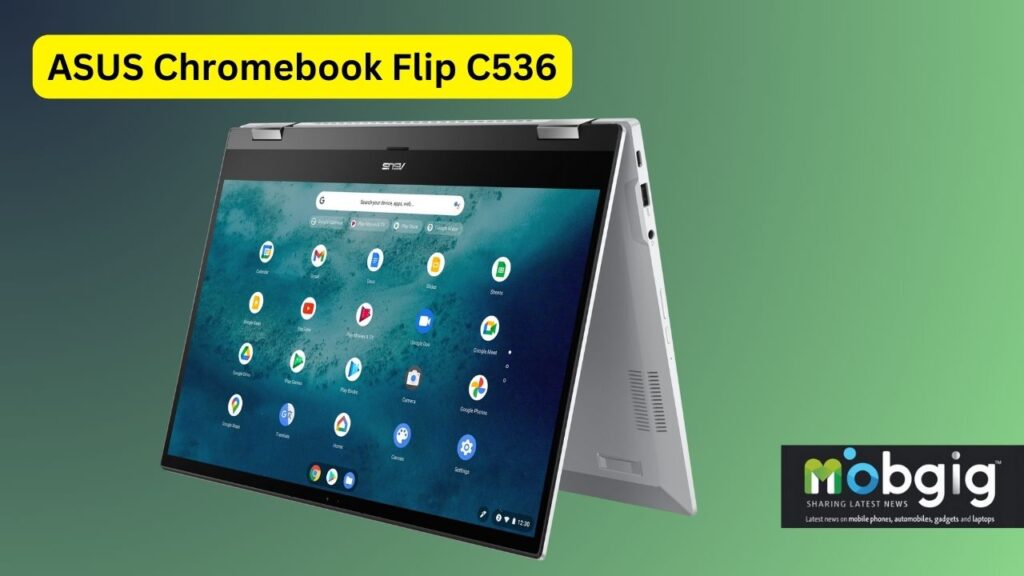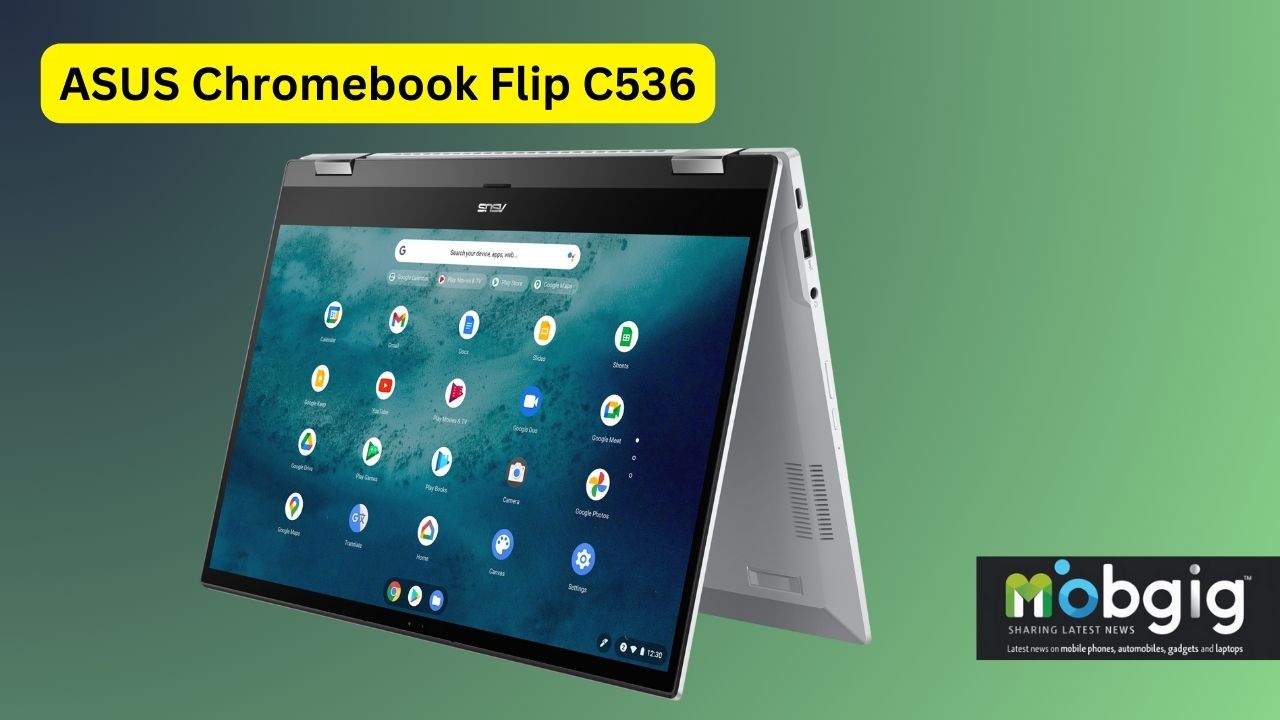ASUS Chromebook Flip C536: Did you know your ASUS Chromebook Flip C536 is capable of far more than what meets the eye? Beyond its sleek design and basic functionality, this versatile device holds numerous hidden features that most users never discover.
From advanced developer tools to secret productivity shortcuts, the Chromebook Flip C536 packs surprising capabilities that can transform your daily computing experience. Whether you’re a casual user or a tech enthusiast, understanding these hidden features will help you unlock your device’s full potential.
This guide explores everything from hidden developer mode features and advanced stylus capabilities to custom configuration options and powerful integration tools that make your Chromebook more powerful than ever before.

Advanced System Capabilities
The ASUS Chromebook Flip C536 offers powerful system capabilities through its advanced development features. Unlocking these capabilities starts with enabling developer mode, which removes standard restrictions and opens up new possibilities.
Hidden Developer Mode Features
Developer mode activation requires specific steps for the ASUS Chromebook Flip C536. To enable this mode, press and hold the Esc and Refresh keys, then tap the power button on the side of the device. After activation, the system displays a warning message with “OS verification is OFF” during each startup. Furthermore, pressing Ctrl + D bypasses this warning message for faster boot times.
Linux Development Environment Setup
The Linux development environment transforms the Chromebook into a robust development platform. Setting up Linux requires navigating to the Settings menu and selecting the Advanced section under Developers. Additionally, the system provides a Debian 10 environment with full access to command-line tools, code editors, and integrated development environments.
The Linux environment supports various development tasks, though some limitations exist. Specifically, cameras and hardware acceleration remain unsupported. To maintain optimal performance, the system automatically checks for package updates every 24 hours when running.
Custom Flags and Experimental Features
Chrome flags offer access to experimental features that enhance the Chromebook’s capabilities. Access these features by entering chrome://flags in the browser’s address bar. One notable experimental feature includes the ability to record GIFs by enabling the #ash-capture-mode-gif-recording flag.
The system provides several optimization options through flags:
- Hyper-Threading for improved CPU performance
- Display scaling adjustments using #borealis-force-double-scale
- Advanced security configurations
Accordingly, these experimental features come with certain considerations. Since they remain in testing phases, enabling them might affect system stability. Nevertheless, they provide valuable tools for users seeking to customize their experience beyond standard configurations.
Secret Productivity Boosters
Mastering the hidden controls of your ASUS Chromebook Flip C536 unlocks a world of efficiency-boosting features.
Advanced Keyboard Shortcuts
Primarily designed for speed and efficiency, the Chromebook’s keyboard holds powerful combinations that streamline daily tasks. Press Ctrl + Alt + ? to view all available shortcuts. For quick window management, use Alt + [ to dock windows left and Alt + = to maximize them.
Moving between tasks becomes seamless with Alt + Tab, which allows rapid switching between open windows. For browser navigation, pressing Ctrl + T opens new tabs, while Shift + Ctrl + T restores recently closed ones. Subsequently, Alt + – minimizes windows, offering clean workspace management.
Multi-Display Configuration Tricks
The Flip C536 excels at handling multiple screens through its Unified Desktop feature. To move windows between displays, press Search + Alt + M or Launcher + Alt + M.
The system treats connected displays as a single workspace, enabling smooth window transitions across screens. Alternatively, users can:
- Dedicate specific monitors to different tasks
- Customize resolution for each display
- Arrange screens to match physical positions
- Set primary display preferences
Power User Gestures
The 5.68-inch glass touchpad incorporates sophisticated gesture controls. For basic navigation, two fingers enable scrolling in any direction, while tapping with two fingers performs right-clicks.
Advanced gestures notably enhance multitasking capabilities. Swiping up with three fingers reveals all open windows, while swiping down closes the overview. For tab management, three-finger swipes left or right switch between open browser tabs. Moreover, four-finger swipes facilitate movement between virtual desks.
The touchpad includes palm-rejection technology, ensuring accurate input during extended use. Users can fine-tune these gestures through the touchpad settings menu, accessible via the status bar.
Hidden Hardware Features
Beneath the surface of the ASUS Chromebook Flip C536’s exterior lies a collection of sophisticated hardware features that enhance its versatility.
Advanced Stylus Capabilities
The Chromebook Flip C536 supports the Universal Stylus Initiative (USI) 1.0 standard, delivering precise digital input capabilities. Particularly noteworthy is the stylus’s 4,096 pressure points that respond to the lightest touch, enabling natural-feeling strokes for sketching and note-taking. The device includes advanced palm rejection technology, allowing users to rest their hands on the screen while writing without causing interference.
The stylus functionality extends beyond basic input, offering specialized tools for creative work. Users can access multiple modes, including laser pointer and magnifying glass options, through the dedicated stylus menu. Essentially, the stylus serves as a versatile tool for capturing screenshots, creating digital artwork, and annotating documents with precision.
USB-C Port Secrets
The Chromebook features two USB 3.2 Gen 2 Type-C ports with full functionality. These reversible ports primarily handle multiple tasks:
- High-speed data transfer
- Display output capabilities
- Power delivery for charging
A unique advantage of this dual USB-C configuration allows charging from either side of the device, minimizing cable management issues. Coupled with fast charging support, these ports ensure minimal downtime and maximum flexibility for connecting peripherals.
Display Enhancement Options
The device boasts a 15.6-inch Full HD display with impressive specifications. The IPS panel operates at 60 Hz with a pixel density of 141 PPI, delivering crisp visuals. The three-sided NanoEdge design maximizes screen area, creating an immersive viewing experience.
In effect, the display offers extensive customization options for optimal viewing. Users can adjust color temperature through the Night Light feature and modify resolution settings for different use cases. The screen supports wide viewing angles and exceptional color reproduction, making it ideal for both creative work and media consumption. For external display connectivity, the HDMI 2.0 port supports 4K output at 60Hz, expanding the device’s versatility for professional setups.
The display’s brightness control responds to keyboard shortcuts, allowing quick adjustments for different lighting conditions. Additionally, the system provides options for screen orientation adjustment and display scaling, ensuring comfortable viewing across various scenarios.
Custom Configuration Options
Fine-tuning the ASUS Chromebook Flip C536 unlocks exceptional performance through specialized configuration options.
Chrome OS Flags Optimization
Chrome flags provide access to experimental features that enhance system performance. Primarily, users can access these features by typing chrome://flags in the address bar. The Hyper-Threading feature, disabled by default for security, boosts performance in apps and games when enabled.
Alternatively, enabling flags like #enable-zero-copy and #enable-gpu-rasterization optimizes graphics performance. The system supports QUIC protocol activation through flags, consequently improving network connectivity and browsing speed.
Performance Tweaking Settings
The Chromebook offers built-in diagnostic tools for performance optimization. Users experiencing slowdowns can run CPU tests through the Diagnostics menu, accessible via Settings > About ChromeOS > Diagnostics.
Chrome’s performance settings manage active tabs efficiently by:
- Deactivating unused tabs to conserve memory
- Reducing image capture rates when battery is low
- Preloading frequently visited pages
Similarly, the system provides options to prevent specific sites from deactivation, hence maintaining continuous functionality for crucial applications.
Advanced Security Features
The Flip C536 implements a robust “defense in depth” security architecture. The system employs multiple protection layers:
- Automatic security updates and patch management
- Sandboxed environments for web pages and applications
- Verified Boot technology for system integrity checks
- Cloud-based data encryption with tamper-resistant hardware
The operating system performs self-checks during startup, ultimately repairing any detected system corruption automatically. ChromeOS has demonstrated unparalleled security, with zero recorded ransomware attacks. The platform’s read-only operating system blocks executables and enforces strict data encryption protocols.
For enterprise environments, the system supports remote device management, allowing administrators to implement forced re-enrollments and prevent data leakage. Organizations utilizing ChromeOS devices have reported a 245% return on investment and 44% lower operational costs.
Integration Superpowers
The ASUS Chromebook Flip C536 stands out through its seamless integration capabilities, bridging the gap between mobile and desktop computing experiences.
Android App Optimization
The Chromebook Flip C536 provides full access to the Google Play Store, enabling users to run their favorite Android applications. Primarily designed for touch interfaces, these apps require specific optimizations for the laptop environment.
For optimal performance, Android apps should incorporate:
- Multi-window support for smooth resizing
- Keyboard and trackpad navigation
- Context menu integration
- Stylus input compatibility
First, developers must ensure their apps adjust layouts appropriately when users resize windows. Second, the implementation includes basic multi-window support, allowing Android apps to render in free-form window containers. Third, applications should continue updating their UI even when not in focus, maintaining functionality across multiple windows.
Cloud Service Integration
The Chromebook seamlessly integrates with Google Workspace and other productivity applications. Through cloud integration, users gain instant access to their work from any device. The system supports various cloud storage services, although some users might experience initial challenges with services like DropBox or OneDrive.
The device’s enterprise capabilities extend beyond basic cloud storage. ASUS Chrome Enterprise devices combine standard Chromebook benefits with advanced business features. These devices integrate smoothly with identity providers, including Microsoft Active Directory, enabling unified authentication across organizations.
Cross-Platform Syncing
The Chromebook’s syncing capabilities ensure seamless data transfer across devices. Upon signing in, users can sync their history, bookmarks, passwords, and Wi-Fi networks to their Google Account. Therefore, all settings remain accessible when signing into different Chromebooks.
The system implements Fast Pair technology for Bluetooth accessories, associating them with the Google Account for easy device switching. Additionally, changes to Chrome sync immediately, reflecting updates across all signed-in devices. Users maintain control over their synced data through customizable sync settings, choosing specific elements to synchronize across devices.
For gaming enthusiasts, cloud-based game saves enable continuous gameplay across supported devices. The system’s cloud integration extends to Android applications, maintaining consistent data across phones, tablets, and Chromebooks. Ultimately, this comprehensive syncing architecture ensures users can seamlessly transition between devices without losing their work or settings.
The integration capabilities extend to enterprise environments, where IT administrators can secure and manage devices remotely. This management framework delivers significant benefits, with organizations reporting a 245% return on investment and 44% lower operational costs through ChromeOS device implementation.
Conclusion
The ASUS Chromebook Flip C536 proves itself as a powerhouse device packed with capabilities beyond its basic features. Through developer mode access, users gain advanced system control while Linux support transforms the device into a complete development platform.
Mastering keyboard shortcuts and gesture controls significantly speeds up daily tasks, while the USI stylus support with 4,096 pressure points enables precise creative work. The dual USB-C configuration and versatile display options add flexibility for various use cases.
Performance optimization through Chrome flags and built-in diagnostic tools ensures smooth operation, backed by ChromeOS’s robust security architecture. Android app compatibility, seamless cloud integration, and cross-platform syncing make the Flip C536 a central hub for productivity.
These hidden features demonstrate why the ASUS Chromebook Flip C536 stands out as more than just another laptop – it’s a sophisticated computing platform that adapts to user needs while maintaining security and efficiency. Understanding these capabilities helps users maximize their device’s potential across personal, creative, and professional applications.

